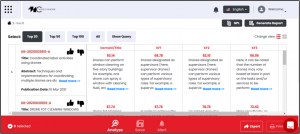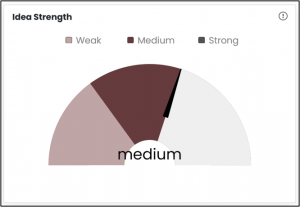
It is both costly and time-consuming to move ideas through the innovation lifecycle, from conception and evaluation to protection and monetization. Even if your R&D team has a great idea, it is not possible to bring it to the market. Some innovations are simply more likely to pay off the significant investment needed to polish and protect them. (On average, one patent is filed for every $1 million spent on R&D.) With such high stakes, how do you choose which technologies to advance from concept to protected IP? Thus, idea prioritization is critical before moving forward.
Your next “big thing” will be determined by how the technology landscape evolves, what your competitors do, and where white spaces exist in or next to your industry. You must also address questions about the life expectancy of your current patents and what is in the R&D pipeline. Of course, your answers to these questions will be directly related to your organization’s IP strategy and overall business goals.
Manual completion of landscape and competitive analysis is possible. However, it is also costly and time-consuming. (In 2022, the average cost of a freedom to operate search was around $10,000.) Every day, landscapes shift; nearly 3.3 million patent applications were filed worldwide in 2020. With innovation moving at such a rapid pace, particularly in fast-moving fields such as pharmaceuticals, telecommunications, and healthcare, failing to advance promising ideas quickly can allow your competitors to gain first-to-market advantages.
The instincts or “gut feelings” of the leadership team are no longer sufficient to determine what happens next. You require AI-powered solutions that evaluate technology and provide actionable statistical insights for idea prioritization process. Using artificial intelligence to augment human decision-making reduces biases while removing assumptions and groupthink.
Assess Ideas and Prioritize Technologies

Using machine learning, statistical modeling, and data mining, XLSCOUT‘s AI-based tools rapidly and efficiently identify potential ideas and evaluate invention disclosure for novelty and commercial potential. In the process, the report identifies semantically similar patents as well as highly relevant keywords and concepts. Furthermore, it provides qualitative insights into the inventive value of the idea by categorizing its strength into three zones: low, medium, and high. It assists in effectively identifying ideas that are ready to advance in the innovation lifecycle, in addition to those that would benefit from further iterations.

Our Methodology
XLSCOUT put the use of reinforcement learning to its AI-based Novelty Checker patent search tool to get quality patent research reports in just 10 minutes. The Novelty Checker uses reinforcement learning to filter the noise from the prior art by pulling up the relevant results on top of the list. To be precise, it assists in conducting patentability search/patent research to help you ensure that your innovation is unique. By selecting a few relevant and non-relevant results, users can apply them to the result set. The system takes the user’s feedback and then learns from it. It uses conceptual searching and re-ranks the results by bringing the quality results to the top and sending the noise to the bottom.
Without reinforcement learning, users go through hundreds of results manually. By applying this process, users can skip going through the non-relevant results. Reinforcement can also be applied multiple times to a result set according to users’ different requirements/criteria. Users can then view the Top-10 or Top-20 results for each criterion to perform a prior-art analysis for idea validation.
Users can quickly generate an automated novelty and patentability search report by selecting these Top-10 or 20 results. The Novelty Checker prior art search reports include a list of results along with relevant text mapping with the key features of the invention for enabling quick decision-making.

